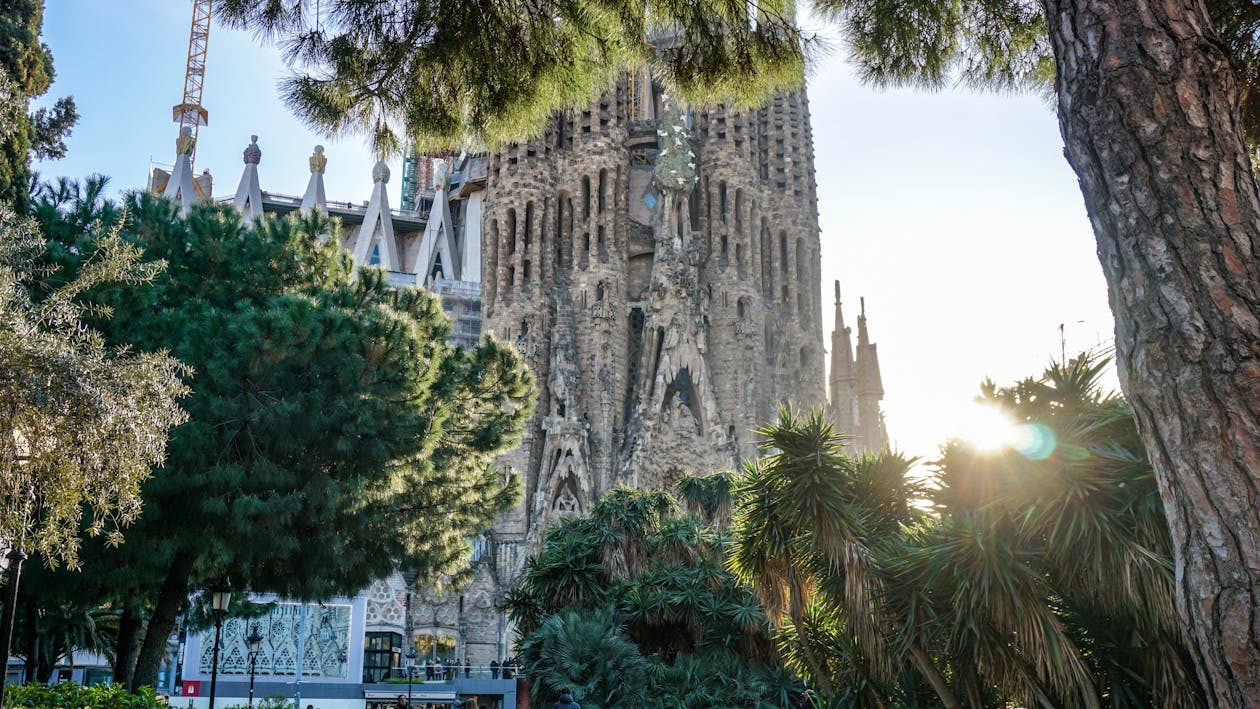One of the most iconic monuments in Barcelona and the world, the Sagrada Familia is an unmistakable symbol of Antoni Gaudí's genius and Spain's rich architectural history. This expiatory temple has captured the imagination of millions of people, with its imposing structure, its unique design and the history that surrounds it - a story that spans more than a century and continues to be written today. In This Is Med, we will explore the fascinating history of the Sagrada Familia, from its conception to the present day.
The Early Years: The Conception of a Dream
The history of the Sagrada Familia began in 1882, when construction of the temple was started under the direction of architect Francisco de Paula del Villar. Originally, the project was planned as a conventional neo-Gothic church, but everything changed a year later when Antoni Gaudí took responsibility for the design. Gaudí, a young Catalan architect, completely transformed the original vision and began work on what would become his masterpiece.
Gaudí's Vision
Antoni Gaudí had a radically different vision for the Sagrada Familia. From the beginning, he conceived of the project as a "Bible in stone," a place where every architectural and sculptural element would tell a biblical story. His approach was deeply influenced by nature, and his designs included organic forms that evoked natural elements such as trees, flowers, and animals. Gaudí saw the temple not just as a place of worship, but as a total work of art, where architecture, sculpture, and spirituality were inseparably intertwined.
An Ambitious Project
Gaudí knew that the Sagrada Familia would be a long-term project. His famous line is often quoted: "My client is in no hurry," referring to God as the primary client. Under his direction, construction progressed slowly but with great attention to detail. During the years that Gaudí worked on the Sagrada Familia, he was constantly refining and adjusting his design, incorporating new ideas and innovative techniques. As the project progressed, Gaudí devoted himself increasingly to the work, to the point that in his later years he lived in the temple's workshop.
The Tragedy and Legacy of Gaudí
In 1926, the tragic death of Antoni Gaudí left the construction of the Sagrada Familia unfinished. Gaudí was killed by a tram in Barcelona, and at that time, only a small part of the temple had been built. However, his legacy lived on. The plans and models he left behind allowed his successors to continue the work, although the project faced numerous challenges over the years, including the Spanish Civil War and a lack of funds.
Continuation of Construction
After Gaudí's death, construction of the Sagrada Familia continued under the direction of various architects, who tried to remain faithful to Gaudí's original vision while adapting the project to the technical and aesthetic advances of each era. During the Spanish Civil War, much of Gaudí's original models and plans were destroyed, which represented a serious obstacle to the progress of the work. However, later architects managed to reconstruct many of the designs from fragments and photographs, allowing construction to go ahead.
The Sagrada Familia Today
Despite numerous challenges, the Sagrada Familia has continued to grow, moving closer to completion each year. Today, construction is still underway, largely funded by private donations and revenue generated by visitors who come to admire Gaudí's unfinished work. The temple is expected to be completed in the next few decades, although timelines have varied over time. On November 7, 2010, Pope Benedict XVI consecrated the Sagrada Familia and declared it a Minor Basilica, a recognition of its spiritual and cultural significance.
The Cultural and Spiritual Impact of the Sagrada Familia
The Sagrada Familia is not just an architectural monument; it is a symbol of faith, perseverance, and human creativity. Over the years, it has attracted millions of people from around the world, becoming one of the most visited tourist destinations in Spain. But beyond its cultural impact, the Sagrada Familia is a testament to the dedication and vision of Antoni Gaudí, who dedicated much of his life to this monumental project.
Gaudí and the Influence on Modern Architecture
Gaudi's work on the Sagrada Familia has profoundly influenced modern architecture. His innovative structural techniques, his use of organic forms, and his focus on integrating nature into architectural design have inspired generations of architects. The Sagrada Familia is undoubtedly a living monument, continuing to evolve and adapt over time, while remaining rooted in the vision of its creator.
The story of the Sagrada Familia is a narrative of creativity, faith, and perseverance. From its humble beginnings to its current state as a work in progress that continues to captivate millions, the temple is a reflection of Antoni Gaudí’s genius and his dedication to a vision that transcended his life. As construction progresses toward completion, the Sagrada Familia continues to be a symbol of the human ability to create something truly monumental and timeless. Visiting this magnificent temple is an experience that connects the visitor to more than a century of history, art, and spirituality.
